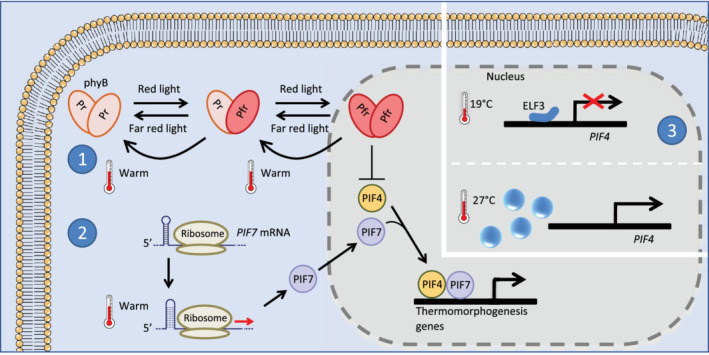FIGURE 2.

Schematic overview of thermomorphogenic pathways in Arabidopsis. 1, Under red light, phyB is converted to a Pfr homodimer that is translocated to the nucleus where it blocks PIF4 and PIF7 activity. High temperatures promote the reversion of phyB back to its inactive state, leaving PIF4 and PIF7 free to transcribe thermomorphogenesis promoting genes. 2, PIF7 mRNA contains a hairpin near its 5′‐UTR sequence. Upon an increase in temperature, this hairpin structure changes. In warm temperature state, PIF7 mRNA is more easily translated and PIF7 protein levels are increased. 3, At cooler temperatures, ELF3 (as part of the evening complex) represses the expression of PIF4. As temperatures rise, a PrLD in ELF3 promotes its phase separation and the formation of liquid droplets, thus relieving the transcriptional repression of PIF4
